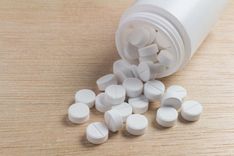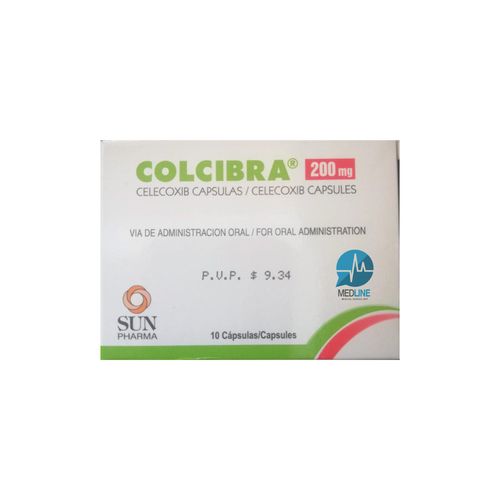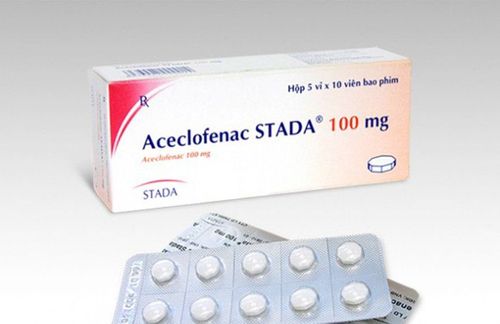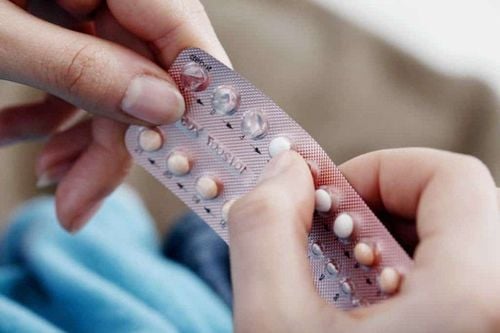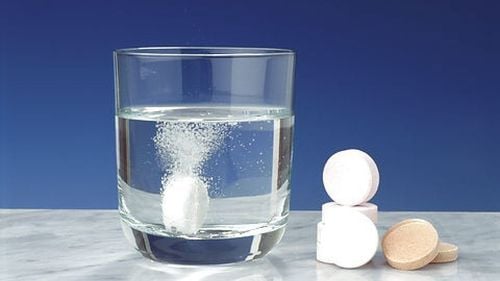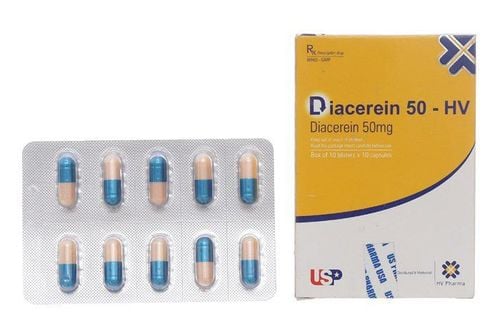Among medications used to treat inflammatory bone and joint conditions, Diprospan is commonly used for acute and chronic osteoarthritis that respond to corticosteroids. So, what are the full effects of Diprospan?
1. What Is Diprospan?
Diprospan is prepared as a 5 + 2 mg/ml injectable solution with the main ingredients:
- Betamethasone dipropionate: 5mg
- Betamethasone sodium phosphate: 2mg
Diprospan is a combination of betamethasone esters with anti-inflammatory, antirheumatic, and antiallergic effects, especially useful for conditions responsive to corticosteroids. After injection, the drug is quickly absorbed and its effects last a long time because betamethasone dipropionate is poorly soluble in water, forming a stored depot that the body slowly absorbs. This helps patients control their condition over a certain period. Diprospan can be administered with a small needle.
2. Indications and Contraindications of Diprospan
2.1 Indications
Diprospan is indicated in acute or chronic inflammatory conditions responsive to corticosteroids, such as:
- Muscle, bone, and soft tissue diseases: Rheumatoid arthritis, osteoarthritis, ankylosing spondylitis, bursitis, tailbone pain, nerve root inflammation, sciatica, torticollis (wry neck), bone spur…
- Skin conditions: Allergic dermatitis, neurodermatitis, urticaria (hives), necrobiosis lipoidica diabeticorum, hair loss (alopecia), psoriasis, cystic acne…
- Allergies: Asthma, angioedema, allergic rhinitis, dust/pollen allergies, insect bites…
- Dermatomyositis, lupus erythematosus.
In addition, Diprospan is also indicated for childhood leukemia, adrenogenital syndrome, colitis inflammation, and others.
2.2 Contraindications
Do not use Diprospan in patients with systemic fungal infections or in patients hypersensitive to any of the drug’s ingredients.
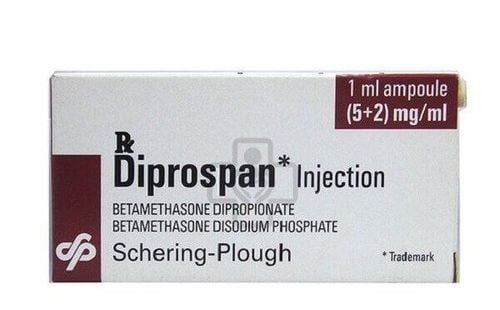
3. How to Use Diprospan
Diprospan is usually administered via intramuscular injection for systemic effects. In some cases, it may be injected directly into soft tissues, into the joint (intra-articular), around the joint, or into inflamed areas and cysts of the foot… Diprospan must not be injected intravenously or subcutaneously. Strict aseptic technique must be followed.
- Systemic use: Start with 1-2 ml by deep intramuscular injection. It can be mixed in the same syringe with 1% or 2% procaine HCl (though rarely needed). The dose and interval depend on severity and response. For severe conditions like lupus or asthma, an initial dose of 2 ml may be used.
- Intra-articular injection: Large joints: 1-2 ml; Medium joints: 0.5-1 ml; Small joints: 0.25-0.5 ml.
- In acute bursitis, injection of 1-2 ml into the bursa can relieve pain and restore mobility within hours; chronic bursitis uses lower doses once acute symptoms are controlled.
- Rheumatoid arthritis or osteoarthritis can see relief (less pain, stiffness) within 2-4 hours after injecting 0.5-2 ml into the joint, lasting about 4 weeks or more.
- Skin conditions responding to Diprospan: Intradermal injection of 0.2 ml/cm² (not exceeding 1 ml per week in total).
- Certain foot inflammations: 0.25 ml each time, twice in a row, can help reduce symptoms of conditions like hallux rigidus, overlapping toes, and arthritic gout.
After a good response, determine the maintenance dose by gradually reducing the Diprospan dose until the lowest effective amount is found. If the patient is exposed to stress, the dose may be increased.
For children, close monitoring is needed as Diprospan can weaken their immune system, affect growth, and suppress natural corticosteroid production.
4. Side Effects of Diprospan
Side effects depend on dose and duration. They usually improve when the dose is lowered or stopped. Possible side effects include:
- Fluid and electrolyte imbalance
- Muscle, bone issues: Muscle weakness, reduced muscle mass, osteoporosis, vertebral compression fractures
- Gastrointestinal: Peptic ulcers causing GI bleeding, pancreatitis, esophagitis
- Skin: Slow wound healing, thin skin, skin atrophy, bruising, sweating, hives, angioedema
- Neurological: Seizures, increased intracranial pressure, severe depression, personality changes, insomnia
- Endocrine: Menstrual irregularities, growth suppression in children, risk of diabetes or affecting blood sugar levels in diabetics
- Ophthalmic: Cataracts, protruding eyeballs, increased intraocular pressure
- Rare hypersensitivity reactions can resemble anaphylactic shock, low blood pressure
Serious acute overdose is uncommon. However, prolonged use or overdose can cause eye-related side effects.

5. Precautions When Using Diprospan
- Do not inject Diprospan intravenously or subcutaneously.
- Diprospan includes a water-soluble component that can disperse from the injection site and cause systemic effects.
- Use caution when giving IM injections to patients with idiopathic thrombocytopenic purpura.
- Inject deeply into large muscles to avoid local tissue atrophy.
- Injections into soft tissues and joints can cause both local and systemic effects.
- Do not inject into infected joints; use antibiotics if infection is diagnosed.
- Do not inject into unstable joints, infected areas, or between vertebrae. Repeated injections in osteoarthritis may worsen joint degeneration. Avoid injecting directly into tendons.
- After intra-articular injection, avoid excessive use of the joint.
- Corticosteroids can mask infection signs, reduce resistance, and hinder infection localization.
- Prolonged use of corticosteroids like Diprospan can lead to cataracts, glaucoma, optic nerve damage, and increased risk of secondary fungal or viral eye infections.
- Sudden withdrawal after prolonged use can cause adrenal insufficiency.
- Diprospan’s effects are amplified in hypothyroid or cirrhotic patients.
Diprospan helps address many bone and joint issues. However, misuse can lead to drug interactions and reduced treatment effectiveness. Patients must follow their doctor’s instructions when using Diprospan.
Please dial HOTLINE for more information or register for an appointment HERE. Download MyVinmec app to make appointments faster and to manage your bookings easily.


